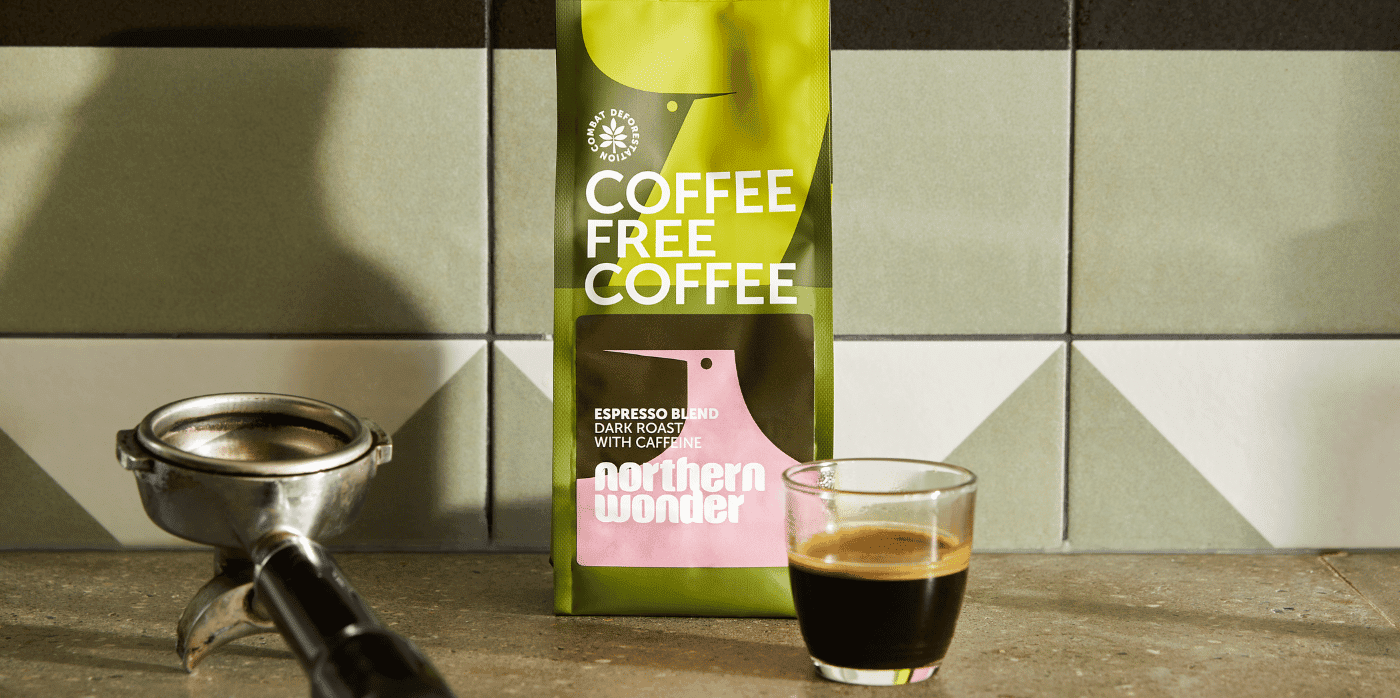
Spotted: Global demand for coffee, particularly certified and organic products, continues to grow. At the same time, climate-change-induced weather alterations are making production more difficult. Unusually, both Brazil and Colombia experienced drops in production in the coffee year 2021 to 2022 due to unfavourable weather conditions. Coffee plants are particularly sensitive to changes in climate, causing coffee growers to frequently expand further into the rainforest when current arable locations become less suitable for growing.
As lovers of coffee who hate the impact its production has on the world’s forests, Dutch food technologists Northern Wonder have created a coffee made from non-tropically grown natural ingredients. Using combinations of roasted cereals, roots, fruits, and legumes, the company produces both caffeinated and non-caffeinated versions of its coffee.
Currently two products are available. A filter blend and industrially compostable capsules that are compatible with Nespresso machines are for sale on the Northern Wonder website. An espresso blend and cold brew versions are both in development, and Northern Wonder has two patents pending for its technology.
The full ingredient list for each coffee is listed online, and the Northern Wonder team is clear that the current products are only the first batch. The company ships worldwide and has plans to offer the products via retail partners at a later date.
Research and development for products and the entire life cycle of the coffee continues with partners that include Wageningen University & Research and the World Food Center lab. An initial Life Cycle Assessment of Northern Wonder coffee found a much smaller emissions and water and land use footprint than tropically grown coffees.
Other recent innovations in the coffee industry from Springwise’s archive include a new way to recycle capsules and new manufacturing uses for waste grounds.
Written By: Keely Khoury

